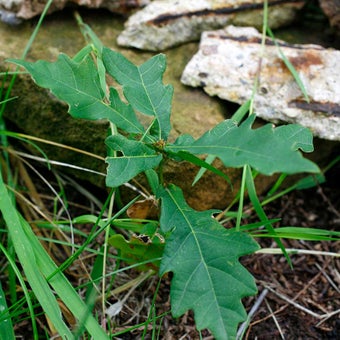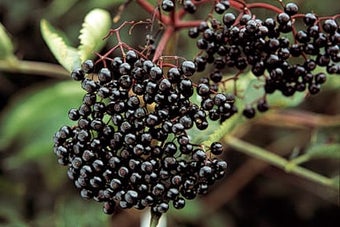
Quick facts
Recommended trees for gardens;
Acer campestre (field maple)
Betula pendula (silver birch)
Corylus avellana (hazel)
Ilex aquifolium (holly)
Sorbus aucuparia (rowan)
Introduction
trees and shrubs have a natural place in British and Irish gardens. Some are already familiar favourites either as full-grown trees or clipped plants, including English yew (Taxus baccata), hornbeam (Carpinus betulus) and silver birch (Betula pendula).
Overall, choose the plants that will thrive in the conditions and on the soil in your garden.
Which plants are native to where?
The plants listed here are native to either or both of:
- Great Britain: Mainland Britain, including England, Wales and Scotland, Ireland: (Republic of) Ireland/Éire and Northern Ireland
- There are more native plants in mainland Britain than Ireland. This is because mainland Britain is closer to the European continent than Ireland – when the ice melted, being closer made it easier for seeds and spores to recolonise the nearby land through various means like wind, water currents and animal migration
- ‘Native’ plants naturally arrived in the country shortly after the Ice Age
- ‘Archaeophytes’ established in Great Britain and Ireland between the Neolithic period and the year 1500. They are not technically ‘native’
- ‘Wildflowers’ - many of the plants we refer to as ‘wildflowers’ are archaeophytes.
We haven’t used the term “UK” because native plants are grouped by the geographical regions of Great Britain and Ireland, not by political borders. Saying “UK” could be confusing, since plant ranges don’t always match up with country borders.
Suitable plants
This list comprises trees and shrubs to the Britain and Ireland. It excludes natural hybrids and non-native species that have (see section below).
Large Trees 25m (80ft) or over at maturity
Alnus glutinosa (alder): 25m, good on wet soils
Betula pendula (silver birch): 25m, attractive white
Carpinus betulus (hornbeam): 25m, good for hedging
Fagus sylvatica AGM (beech): 25m, good for hedging and chalky soils
Ilex aquifolium AGM (holly): 25m, evergreen, attractive berries on female forms
Pinus sylvestris (Scots pine) 30m, evergreen, good specimen tree
Populus nigra subsp. betulifolia (native black poplar): 35m, pollution-tolerant
Quercus petraea (sessile oak): 30m, good specimen tree, lime-tolerant
Quercus robur (English oak): 35m, good specimen tree, lime-tolerant
Tilia cordata (small-leaved lime): 25m, prefers chalky soil
Tilia platyphyllos (large-leaved lime): 30m, prefers chalky soil
Medium Trees between 10-20m (25-70ft) at maturity
Acer campestre (field maple): 10-15m, good autumn colour
Betula pubescens (downy birch): 20m, tolerates poor or wet, acid soil
Crataegus monogyna (hawthorn): 10m, good as hedging, attractive berries
Populus tremula (aspen): 20m, tolerant of most soils
Prunus avium (wild cherry): 20m, attractive flowers and fruits
Prunus padus (bird cherry): 15m, autumn colour, fragrant flowers
Salix caprea (goat willow): 10m, yellow catkins on male trees
Salix pentandra (bay willow): 10m, showy catkins on male trees
Sorbus aria (whitebeam): 20m, attractive berries, good on chalk
Sorbus aucuparia (rowan): 15m, attractive berries and autumn foliage
Sorbus domestica (service tree): 20m, pollution-tolerant, best on acid soils
Sorbus torminalis (wild service tree): 20m, attractive autumn colour
Taxus baccata AGM (yew): 15m, evergreen, pollution- and wind-tolerant
Small Trees between 5-9m (5-28ft) at maturity
Arbutus unedo (strawberry tree) 8m, evergreen, attractive flowers, fruit and bark
Corylus avellana (hazel): 5m, good on chalky soil
Crataegus laevigata (midland hawthorn): 8m, attractive berries
Frangula alnus (alder buckthorn): 5m, attractive autumn colour and fruit
Malus sylvestris (crab apple): 9m, attractive fruit
Prunus spinosa (blackthorn): 5m, spiny tree, small purple fruit
Salix cinerea (grey willow): 6m, silky male catkins
Sambucus nigra (elder): 6m, attractive flowers and fruit
Large Shrubs between 3-6m (10-20ft) at maturity
Cornus sanguinea (dogwood): 3m, attractive winter stems
Euonymus europaeus (spindle): 3m, good on chalk, attractive fruits
Hippophae rhamnoides AGM (sea buckthorn): 6m, needs drainage, female bears fruit
Juniperus communis (juniper): 6m, grows in any well-drained soil
Ligustrum vulgare (wild privet): 3m, useful for hedging
Rhamnus cathartica (buckthorn): 6m, good autumn colour, bears fruit
Rosa canina (dog rose): 4m, fragrant flowers and red hips
Viburnum lantana (wayfaring tree): 5m, attractive flowers and fruit
Viburnum opulus (guelder rose): 5m, attractive fruit and autumn colour
Medium Shrubs 1.5-2.5m (5-8ft) at maturity
Cytisus scoparius (broom): 1.5m, thrives in poor, acid soil
Daphne mezereum 1.5m
Rosa arvensis (field rose): 2m, fragrant flowers and red hips
Rosa rubiginosa (sweet briar): 2.5m, apple-scented foliage, red hips
Ulex europaeus (gorse): 2.5m, evergreen, good on poor soil
Small Shrubs 1m (3ft) or less at maturity
Arctostaphylos uva-ursi : 30cm
Daphne laureola : 1m
Potentilla fruticosa : 1m
Rosa spinosissima (burnet rose): 1m, attractive flowers and hips
Ruscus aculeatus (butcher's broom): 75cm, evergreen, female plants produce berries
Salix herbacea (dwarf willow): 10cm, forms a creeping mat
Salix lanata AGM (woolly willow): 1m, small alpine species, grey leaves
Salix lapponum (downy willow): 1m, small dense shrub, grey leaves
Salix reticulata AGM (net-leaved willow): 8cm, dwarf, mat-forming species
Teucrium chamaedrys : 90cm
Archaeophytes
Castanea sativa (sweet chestnut)
Mespilus germanica (medlar)
Salix alba (white willow): 25m, very fast-growing
Salix viminalis (osier): 6m, fast-growing, attractive male catkins
911���� Find a Plant – native trees shrubs
Naturalized species
The following are not native but have become naturalised (i.e. introduced into the wild where they now flourish):
Acer pseudoplatanus (sycamore)
Aesculus hippocastanum (horse chestnut)
Amelanchier lamarckii AGM (snowy mespilus)
Juglans regia (common walnut)
Laburnum alpinum
Laburnum anagyroides
Larix decidua (European larch)
Prunus cerasifera (cherry plum)
Quercus ilex (holm oak)
(Turkey oak)









